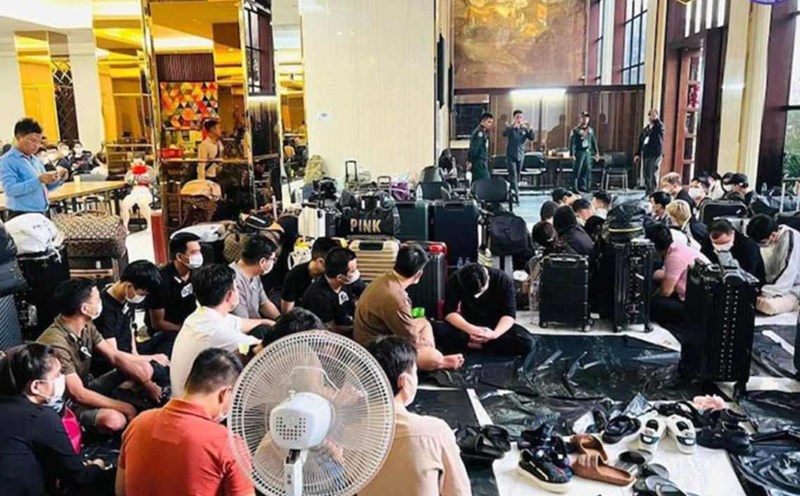Building the E100 factory and raw material areas
The Ministry of Industry and Trade is soliciting comments on the draft Circular regulating the roadmap for applying the mixing ratio of biofuel with traditional fuels in Vietnam.
Assessing some solutions and results of implementing Decision No. 53/2012/QD-TTG as a basis for developing the Circular, the Ministry of Industry and Trade said that from 2014 to present, the Ministry of Industry and Trade has developed and issued many documents related to the implementation of the biological environment coordination roadmap according to Decision No. 53/2012/QD-TTg.
In particular, since 2014, the Ministry of Industry and Trade has proactively issued many directives to implement state management activities and promote the development of biofuel according to a coordinated program, promptly meeting the needs of biofuel development in Vietnam.
Assessing the implementation results of biofuel production and trading enterprises, the Ministry of Industry and Trade said that the whole country has built 7 E100 biofuel factories ( entireetanol after production) with processing technology using input materials that use both cassava and corn, with a total designed capacity of about 600 thousand m3 E100/year (Dong Nai waste treatment plant; Quang Nam waste treatment plant; Quang Ngai biofuel factory; Binh Phuoc biofuel factory; Dai Viet biofuel factory; Dak To biofuel factory and Phu Tho biofuel factory).
At the same time, it will form cassava growing areas with an area of about 517.8 thousand hectares, with an average cassava output of about 10 million tons/year ( standard dried fruit), providing raw materials for the production of food processing, animal feed, biofuel and other fields.
Currently, with a total capacity of 6 E100 factories built in Vietnam (the E100 Phu Tho factory has stopped construction) of about 600,000m3/year, the demand for dried cassava for the production of this product requires a maximum of 1.9 trillion tons (accounting for less than 20% of the national sliced cassava output).
Thus, the domestic cassava supply alone has completely ensured that all 6 factories operate at 100% of the designed capacity. In addition, there is a rich source of domestically grown corn (although the output is not much) and a rich source of income from countries such as the United States, Brazil, Russia, etc.
Through reports and surveys, it can be seen that, after nearly 10 years of implementing Decision No. 53/2012/QD-TTg of the Prime Minister, our country has formed the capacity to produce raw materials ( cassava) exceeding the requirements for E100 production in the period from 2014 to present.e100
Abundant sources of E100 in the world market
The source of E100 in the world market is very abundant, coming from some major alcohol producing countries such as the United States, Brazil... Vietnam can directly import from the above-mentioned producing countries as well as from regional distribution centers such as Singapore or Korea.
The ports receiving imported E100 sources that can receive used ships carrying etanol (load of about 50,000 tons/ship) are ports in all 3 areas with large warehouses of enterprises: B12 warehouse (Cai Lan, Quang Ninh), Nha Be warehouse (Ho Chi Minh City), Van Phong warehouse (Khanh Hoa Province), Da Nang Port (Da Nang City).
E100 of the imported goods are transported by sea to the above warehouses, thereby distributing to the coordination system nationwide by seaplane or tanker truck.
According to the Ministry of Industry and Trade, based on reports from localities and enterprises, the production, import, storage system of E100, E100 and mineral gasoline combination, and biofuel distribution in Vietnam currently fully meet and exceed the demand for E5 gasoline. By coordinating and distributing E10 gasoline nationwide, businesses can do it, however, there needs to be a specific roadmap to prepare facilities.
In Article 4 of the draft on the roadmap for applying the biofuel mixing ratio, the Ministry of Industry and Trade proposed that from January 1, 2026, all gasoline that is mixed, mixed, and sold for use by motor vehicles using gasoline engines nationwide is E10.
From January 1, 2021, all gasoline sold to motor vehicles is E15 gasoline, or biofuel with other mixing ratios regulated by the Minister of Industry and Trade based on the current status of development of motor vehicles, socio-economic development conditions, conditions for production and import of biofuel, biofuel and ensuring energy security.











